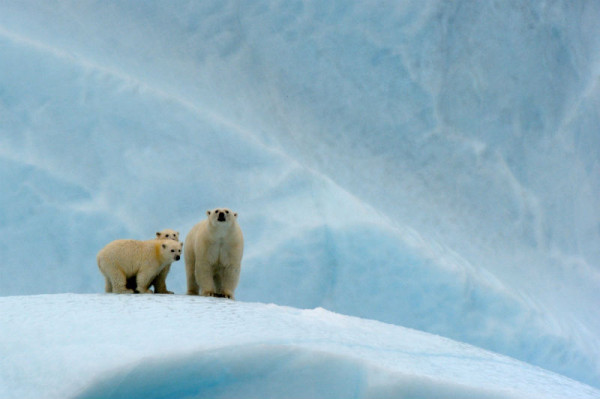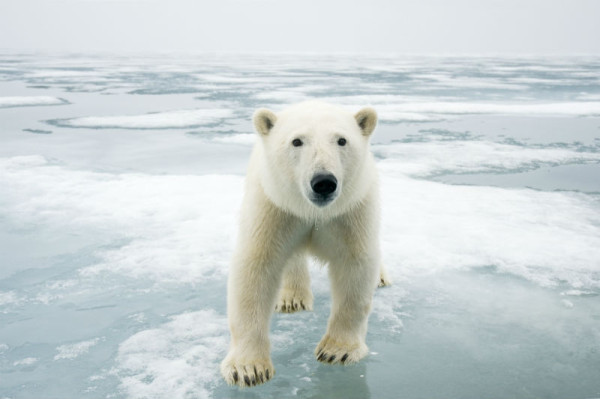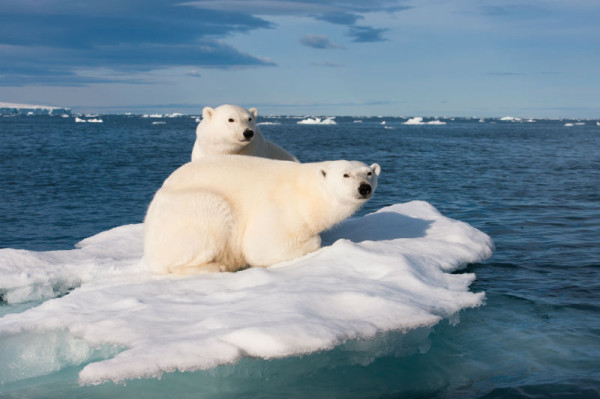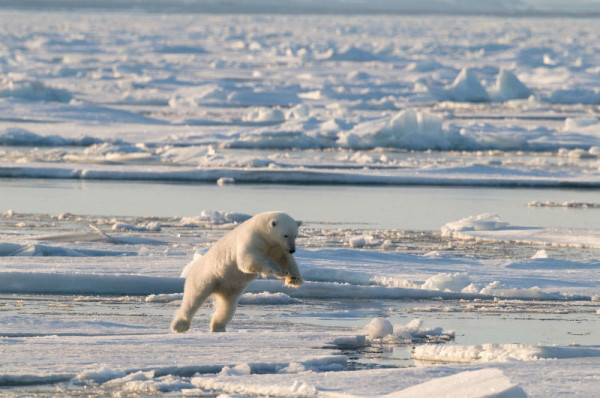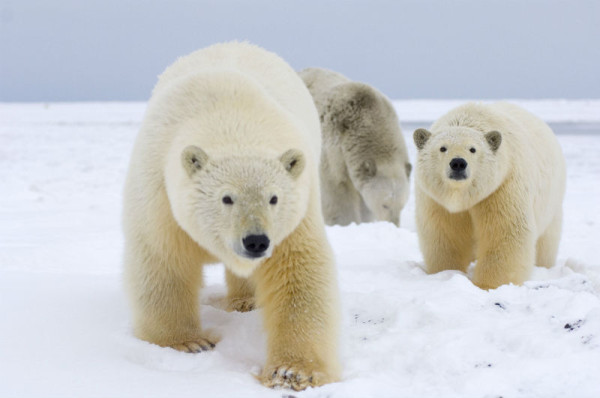Polar Bear Week: Less ice, fewer bears
When mother bears and their cubs emerge from their dens each March, they head straight for the edge of the sea ice. Here, the mother bears hunt the ringed seals that are their main food source, allowing them to rebuild their stores of body fat that provide the nutrients for their milk. Here, the cubs begin to learn about life as a polar bear – life on the sea ice.
The largest bear in the world and the Arctic’s top predator, polar bears are a powerful symbol of the strength and endurance of the Arctic. But these animals are at risk as sea ice, their primary habitat and the foundation of the arctic ecosystem, melts beneath their paws—an impact of global climate change.
As sea ice shrinks dramatically every summer and freezes less each winter, polar bears face a real long-term threat. As Geoff York, WWF’s leading polar biologist says, “less ice, fewer bears.”
Ice loss
As sea ice decreases at a rate of about 4.6 per cent each decade, polar bears at the southern edges of their range –southern Nunavut, Manitoba and Ontario (yes, Ontario!) – are no longer coming off the ice for a month or two in the summer like they used to. Instead, they’re spending five to six months on land, with no seals to eat.
Adapting to the new Arctic
This much we know: the Arctic is changing at an unprecedented rate, and these changes are beginning to affect polar bear populations.
“Polar bears certainly have some capacity to adjust to the warming, but they are unlikely to truly adapt to the rapid changes.” Geoff notes. “We’ve seen them shift denning areas in Alaska and Norway and we are seeing more bears spend longer time onshore. And they’re strong swimmers, absolutely. But these changes are transforming what it means to be a polar bear, and they are simply happening too quickly.”
Will northern bear populations have an edge? Will southern bear populations move or adapt? These are the kinds of questions Geoff and other scientists are exploring. WWF is driving this research by supporting key projects, for example, to map current polar bear habitat. The focus is on understanding how polar bears might be affected by ice loss and where their traditional habitat will remain intact the longest.
That’s why WWF and leading scientists around the world are paying particular attention to the high Arctic waters between Canada and Greenland. They’ve called it The Last Ice Area. The place where sea ice is projected to endure longer than anywhere else, the place that may be the key to the polar bear’s future on Earth.
“No one has ever witnessed this kind of rapid change in the Arctic before,” Geoff says. “We’re still working to understand what it means. But we’re certain that polar bears will face a difficult future without the sea ice that has shaped their lives for thousands of years.”
Support WWF’s Arctic efforts and Coca-Cola® will match your donation dollar-for-dollar until March 15, 2014, to a maximum of $1 million USD (Canada and U.S. only).

